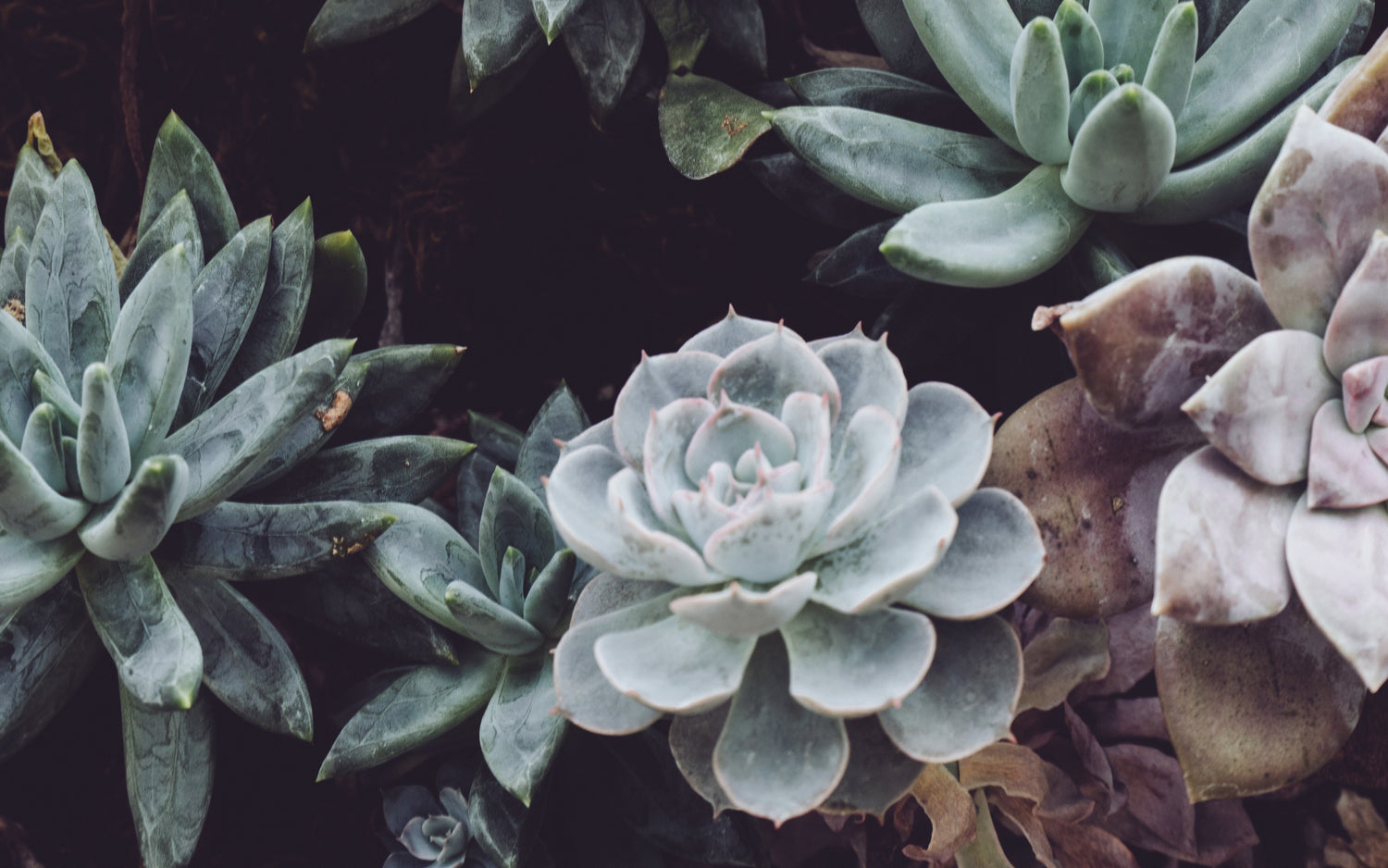When you notice your succulent leaves changing color, you might be alarmed at first. Despite their reputation for being hardy and low-maintenance, succulents will turn brown or yellow when suffering from different issues. Leaf discoloration is actually a very common problem for succulents. Luckily, solutions for this issue tend to be quick and easy to implement.
If your succulent leaves are turning different shades of yellow or brown, then try to identify the reasons first (it might be more than one). After identifying the issues, you can apply the appropriate fixes so that your succulent can eventually return to its typical, vibrant color.
Why are my succulents turning brown?
- Sun damage
Sun damage is a common reason succulents turn brown. Sun damage can occur when you move your plant from a dim spot to a bright one too quickly. Your succulent might also become sunburned during periods of high heat or during the summer season when the sun is harsher. When your plant experiences sun damage, brown spots will appear.
If your plant is suffering from sun damage, relocate it to a shadier location. If you want to move your plant to a sunnier area, you have to slowly acclimate it to its new environment. Moving to a new spot too quickly will cause overexposure. You can gradually relocate your plant by moving it to a brighter area each day. Brown spots from sunburn won’t fade, but the leaves of your succulent will eventually fall off, allowing new leaves to grow in their place. If you follow the proper sun recommendations for your plant, these fresh leaves should be green and healthy.
- Underwatering
Another reason that succulent leaves turn brown is underwatering. Although succulents do not like being overwatered, they also shouldn’t be underwatered. If the leaves are becoming brown, dry, and shriveled, this is a sign of underwatering. The solution to this issue is simple—just give your plant more water. After quenching your succulent, it should return to its usual lush self.
When watering succulents, you should use the soak and dry method. Simply misting the soil will leave your plant parched. You should first soak the soil with plenty of water. Avoid wetting your plant’s leaves. Then, wait at least two weeks and check to see if the soil is dry. If it is thoroughly dry, then you can water your succulent again. Follow this method to make sure your succulent is getting just the right amount of moisture.
Why are my succulents turning yellow?
- Overwatering
When your succulent is turning yellow or translucent, this can be a sign that you’re overwatering it. The leaves might also turn limp and mushy. If you lightly brush against your plant, and the leaves fall off, this is a sign your plant has been overwatered. Overwatering tends to be a much more common issue than underwatering.
If you notice signs of overwatering in your succulent, you should immediately cut back on liquid. Hold off on watering again until the soil is thoroughly dry. To check moisture levels, you can use a stick to poke the top inch of the soil.
You should also make sure that you are using the appropriate mix for your plant. Regular potting soil holds too much dampness. You should use a type that is appropriate for succulents, like cactus potting mix. To increase drainage, you can also add sand or gravel. And always make sure your plant’s pot has drainage holes to let excess liquid escape.
- Lack of Nutrients
If your plant is lacking nutrients, then its leaves might fade to yellow. This doesn’t happen immediately and actually takes years to show up. Nutrients in your potting mix can usually last for a few years. Once these nutrients are used up, your plant will need to be replanted in a new mix, or else its leaves will show discoloration.
When you repot your plant, make sure you use an appropriate potting soil. You can also use fertilizer to increase available nutrients. Dilute the fertilizer based on the product’s recommendations, and use it every two weeks while your plant is growing. You don’t have to use fertilizer during the winter months since that’s when most succulents are dormant.
Is it too late?
When your succulents turn brown or yellow, they can be salvaged if you identify and solve the causes before they progress further. Succulents are an astonishingly hardy plant type, and they are resilient against many issues. It takes a lot to keep a succulent down. If you can identify what to fix, then your plant will likely return to normal after you apply the needed solutions.
Although not all discolored spots fade away, these leaves can shed, and your plant can grow new foliage in their place. Soon, your potted friend will look healthy, vibrant, and lush again.


